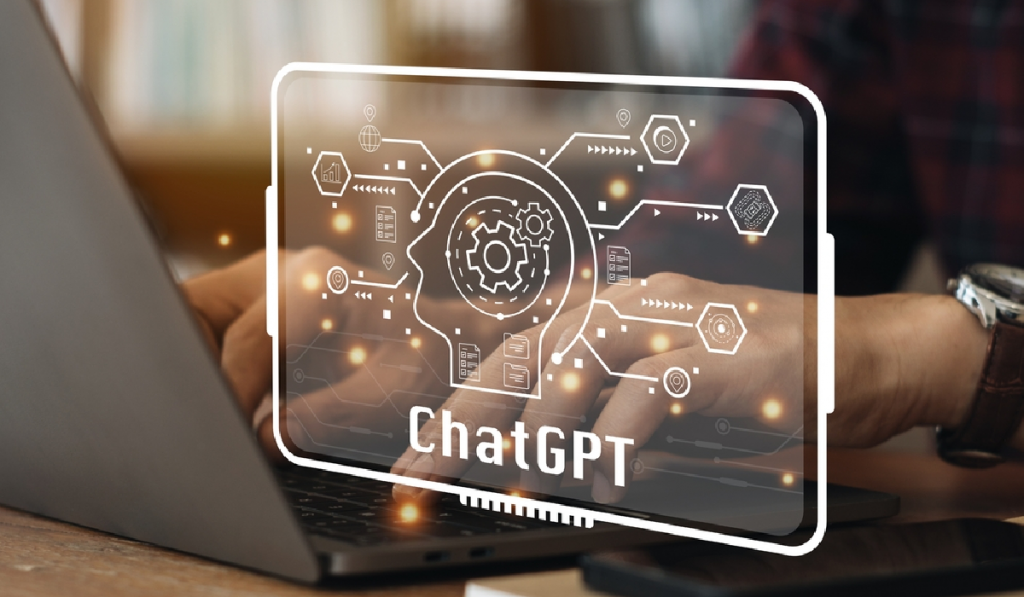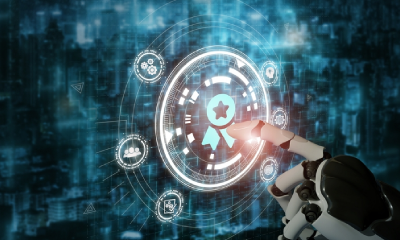Highlights:
- ChatGPT (Generative Pre-trained Transformer) is a web-based chatbot powered by generative artificial intelligence, developed and launched by OpenAI, the American artificial intelligence research laboratory, in November 2022. It is popularly known as OpenAI ChatGPT.
- ChatGPT is an impressive and powerful tool for natural language processing and can be a valuable resource for a wide range of applications. However, it’s essential to recognize its limitations and use it in appropriate contexts where its strengths can be maximized.
Nowadays, you cannot tune into the news without hearing about ChatGPT AI. For the long haul, there has been comprehensive coverage of ChatGPT, making people anxious and staying on their toes. Moreover, it does not matter whether it is important to broadcast news, niche industry, or conversation on social media; mind you, generative AI is everywhere. It did exist but was publicly announced in recent times. With open public testing comes an incredible volume of stories, use cases, and conflicting philosophies and ethics questions. It’s no wonder it’s all a bit overwhelming and confusing.
So, what is ChatGPT, and why has it gained bustling popularity among the crowd? Let’s dig into it in detail.
ChatGPT (Generative Pre-trained Transformer) is a web-based chatbot powered by generative artificial intelligence, developed and launched by OpenAI, the American artificial intelligence research laboratory, in November 2022. It is popularly known as OpenAI ChatGPT.
The new kid on the block, ChatGPT, is driven by artificial intelligence and claims to be beneficial for coding, content authoring, etc., with minimal human participation. As intelligent machines gain popularity, businesses may encounter AI biases, security issues, and less tailored CX.
The purpose is to communicate with humans and help them with various tasks, such as answering questions, providing information, generating text, and engaging in conversation.
The world knows that Microsoft invested USD 10 billion into the company that created ChatGPT. So, it’s likely that this software or some style will be integrated into Microsoft Word or Google Docs in the coming years or even months.
However, as with any technology, along with the benefits, there are also possible drawbacks that need to be considered. This article will drill into the pros and cons of ChatGPT.
Pros of ChatGPT AI
As an AI language model, ChatGPT has several benefits and advantages:
Used as a first draft: ChatGPT is great for developing new ideas, creating the first draft, and offering summaries. It can also create vast volumes of text with a short reaction time, making it perfect for scalable content production – so long as it undergoes rigorous (human) quality assurance afterward! The idea is to use ChatGPT in conjunction with human knowledge, not as a replacement.
Access to vast knowledge: ChatGPT has been trained on an enormous corpus of text, allowing it to access and process an extensive range of information across different domains.
Fast and efficient: ChatGPT can respond instantly to queries and conversations without needing breaks or rest. It can process and generate text at a much quicker rate than humans.
No biases or emotions: ChatGPT is an objective and neutral entity that doesn’t have personal preferences or emotions, which allows it to provide consistent and unbiased answers.
Available 24/7: ChatGPT can always respond to queries and conversations anytime, making it highly accessible and convenient for users.
Language diversity: ChatGPT can communicate in multiple languages, making it accessible to people from different parts of the world who speak different languages.
Scalability: ChatGPT’s architecture is highly scalable, meaning it can handle a large volume of queries and conversations without getting overwhelmed or slowing down.
Learning and improving: ChatGPT is a machine learning model that continually learns and improves its responses based on user interactions, making it more accurate and effective over time.
Cons of ChatGPT AI
As an AI language model, there are a few potential cons to using ChatGPT:
Security risk: ChatGPT’s unrestricted use can increase cybersecurity concerns that might harm the entire enterprise. Cybercriminals may easily create fraudulent emails with insecure links, files with sensitive data, or instructions to deposit money into reputable firm accounts.
ChatGPT may increase phishing emails or even develop malware. More individuals might produce malware, perhaps resulting in more assaults and breaches.
Lack of emotional intelligence: While ChatGPT can recognize and generate natural language responses, it does not possess emotional intelligence. It cannot perceive or respond to emotional cues or tones of voice, which can be important in certain contexts such as counseling or therapy.
Limited knowledge: ChatGPT’s responses are based on the data it has been trained on. While it has access to a vast amount of information, it may need help to provide answers to some questions or topics that fall outside its knowledge base.
Inability to fully understand the context: While ChatGPT can generate natural-sounding responses, it may only sometimes fully understand the context in which a question is asked. This can lead to misunderstandings or inaccurate answers.
Potential biases: ChatGPT may reflect the preferences in the data it was trained on. This means that it may generate responses that reflect existing social or cultural biases, which can be problematic.
Lack of personal touch: ChatGPT is an artificial intelligence that cannot provide the same personal touch or empathy that human interaction can offer. This may not be suitable for individuals who prefer a more personalized interaction.
Possible legal implications: GPT was constructed using data from the Common Crawl dataset, comprising copyrighted content from publishing corporations, individual writers, and academics. Experts have also cautioned that AI-based apps might be utilized for cybercriminal activity. ChatGPT and other variants are subject to legal ambiguities and potential compliance expenses.
Conclusion
In conclusion, ChatGPT is an advanced AI language model that can generate natural-sounding responses to a wide range of questions and topics. With the latest natural language processing technology advancements, ChatGPT has become increasingly accurate and sophisticated in its responses.
As of 2023, ChatGPT is one of the most advanced language models available, able to understand and generate responses in multiple languages. It has been trained on vast amounts of data and can provide accurate and relevant information on various topics.
However, it’s important to note that ChatGPT has limitations. As an AI language model, it may not fully understand context, lack emotional intelligence, and may be subject to potential biases. Additionally, it may be unable to provide personalized interactions or empathetic responses.
ChatGPT is an impressive and powerful tool for natural language processing and can be a valuable resource for a wide range of applications. However, it’s essential to recognize its limitations and use it in appropriate contexts where its strengths can be maximized.














